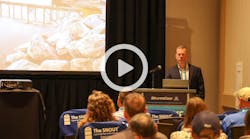
Starting this month, the US Department of Agriculture will be collecting data for a nationwide survey on conservation practices. Specifically, the department is studying the types of conservation measures being used on both cultivated and non-cultivated agricultural lands and what effects they’re having on water quality and soil health.
The full name of the effort is the National Resources Inventory – Conservation Effects Assessment Project (NRI-CEAP-2) survey. I mentioned it in this blog back in July. In addition to getting information directly from the farmers and ranchers who are interviewed—about 23,500 of them—the USDA will use computer models to see how the practices are affecting land in various parts of the country. Practices of interest are cropping and tillage methods, pesticide use, applications of livestock manure, and other activities.
What will the government do with the information? USDA will use it to help shape policies and improve farmers’ access to voluntary conservation practices. They want to see what works, what doesn’t, and how to get people to use the stuff that does. USDA conducted a similar survey in 2003–2006, and the department will also compare the results from this survey to the earlier one to see how conditions have changed in the meantime.
The USDA National Agricultural Statistics Service—the folks who are actually contacting people and conducting interviews—emphasize that no individual farmer or operation can be identified through the data, and information the participants share “cannot be used for the purposes of taxation, investigation, or regulation.”
Interviews are being conducted now through February 2016, and a second set will be conducted with different farmers and ranchers next fall and into winter 2017. If you are one of the people contacted—whether you participate in any sort of voluntary program, and no matter what type of conservation practices you are or aren’t using—please take the time to respond.
About the Author
Janice Kaspersen
Janice Kaspersen is the former editor of Erosion Control and Stormwater magazines.

